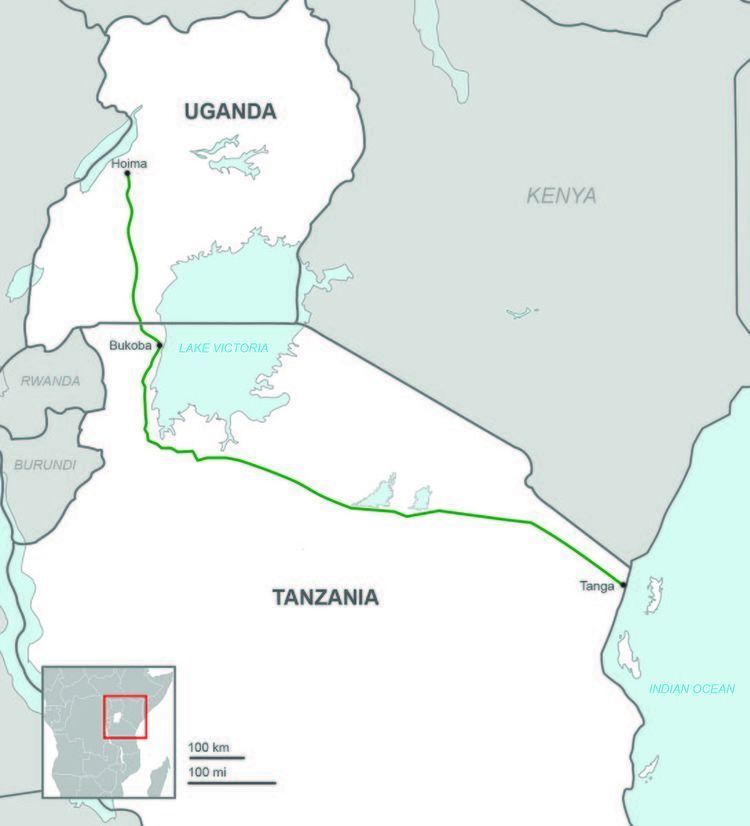Country Uganda & Tanzania From Hoima, Uganda To Tanga, Tanzania | General direction West to East Passes through Bukoba, Tanzania Type Oil pipeline | |
 | ||
The Uganda–Tanzania Crude Oil Pipeline (UTCOP) is a proposed pipeline to transport crude oil from Uganda's oil fields to Tanga, Tanzania, a port on the Indian Ocean.
Contents
Location
The oil pipeline would start in Buseruka sub-county, Hoima District, in Uganda's Western Region. It would travel in a general southeasterly direction to pass through Masaka in Uganda, Bukoba in Tanzania, loop around the southern shores of Lake Victoria, continue through Shinyanga and Siginda, to end in Tanga, a distance of approximately 1,410 kilometres (880 mi).
Background
Uganda has proven oil reserves exceeding 6.5 billion barrels, of which about 2.2 billion barrels are recoverable. The country plans to build a refinery in the Western Region to process what is needed locally and regionally, with the rest exported via pipeline to the Indian Ocean coast.
Uganda previously agreed to build a joint Uganda–Kenya Crude Oil Pipeline to the Kenyan port of Lamu.
Concerns regarding security and cost, however, motivated parallel negotiations with Tanzania regarding a shorter and safer route to Port Tanga, with the support of the French petroleum conglomerate Total SA.
At the 13th Northern Corridor Heads of State Summit in Kampala in April 2016, Uganda officially announced its choice for the Tanzania route for its crude oil, in preference to the Mombasa or Lamu routes in Kenya. At that summit, the presidents of both Kenya and Rwanda were present, along with representatives from Ethiopia, South Sudan, and Tanzania. At the same summit, President Uhuru Kenyatta announced that Kenya would build the Kenya Crude Oil Pipeline on its own, thereby abandoning the Uganda–Kenya Crude Oil Pipeline.
The planned capacity of this pipeline is 200,000 barrels of crude oil per day.
Cost, funding, and timetable
It was expected that construction would start in August 2016 and last three years at a budgeted cost of US$4 billion, offering approximately 15,000 construction jobs and between 1,000 and 2,000 permanent jobs. In March 2016, the Daily Monitor newspaper reported that Total E&P is prepared to spend US$4 billion (UGX:13 trillion) to fund construction of this pipeline. Following meetings between delegations led by the oil ministers of both Tanzania and Uganda, held in Hoima in July 2016, it was announced that construction of the 1,443 kilometres (897 mi) pipeline would begin in January 2017 and last 36 months. Completion of the pipeline is planned for 2020.
Oil refinery
An oil refinery is also planned to be constructed in western Uganda to process the oil for exports within the East African Community. The $2.5 billion project is to be developed under a public-private partnership, with 60 percent of the project owned by the private developer. The remaining 40 percent would be distributed among east African countries. On 30 April 2016, Tanzania agreed to buy 8 percent of the shares in the refinery for US$150.4 million.
